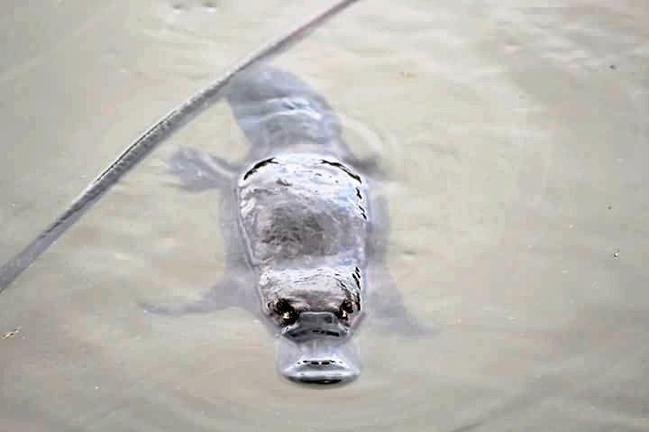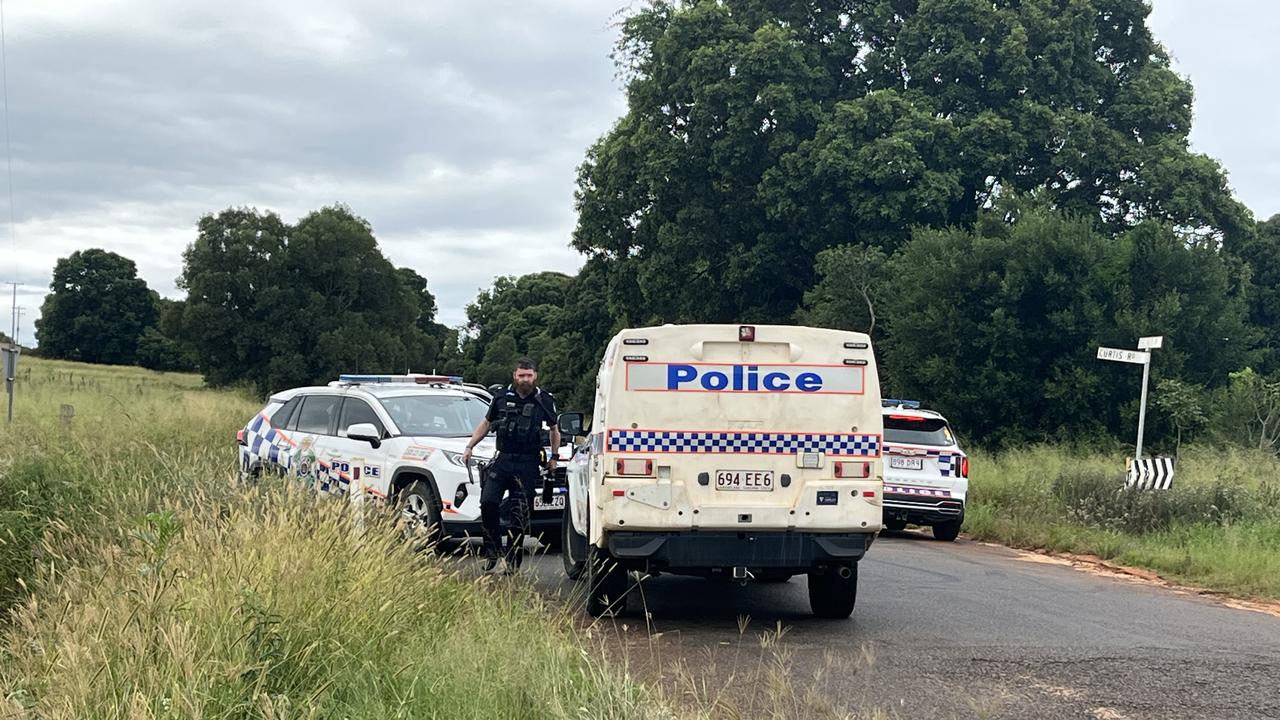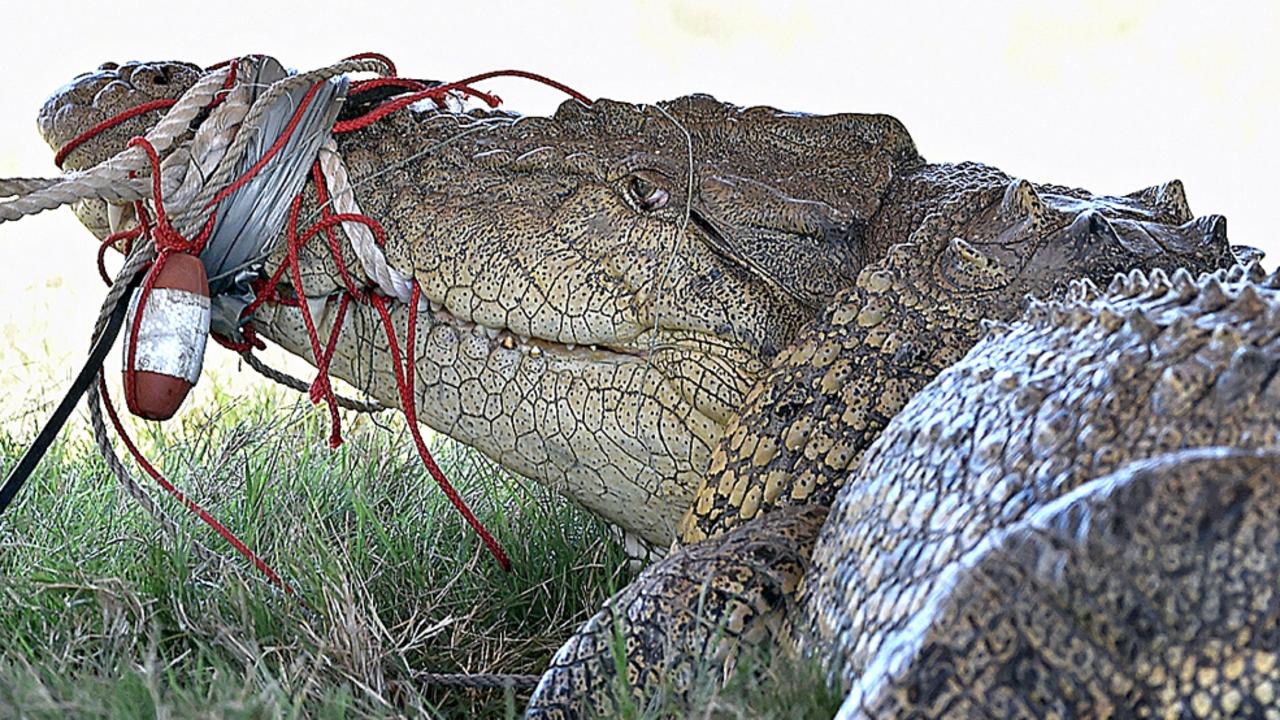Platypus not so shy around Gympie
Known as shy in nature, platypus in the Gympie region have been proving otherwise for some time, with a list of sightings in the region over the years and even

Gympie
Don't miss out on the headlines from Gympie. Followed categories will be added to My News.
KNOWN as shy in nature, platypus in the Gympie region have been proving otherwise for some time, with a list of sightings in the region over the years and even topped off with some playful interaction with residents.
Yesterday Gympie woman Jess Hayes was lucky to see one with her two-year-old playing in the Mary River near Kidd Bridge.
"We spotted it and it was playing games with us by diving under and then popping back up about a minute later," she told The Gympie Times.
When we posed the question on Facebook about sightings in the region, it was obvious these intriguing animals weren't completely in hiding in the region.
"We have a family of them that come and go. They are not at all shy. This fella is Petey and would be about 2ft long. Love platys," Donna Fitzgerald wrote.

The Department of Environment and Heritage Protection advises the best times to see a platypus are dusk or early morning.
"If you want to see a platypus in the wild, find a creek or still pool where platypus are known to live. Platypus have sensitive hearing and are easily disturbed," experts say.
"Sit quietly and watch the water surface for ripples which usually show a platypus is present.
"Look for a conspicuous bow wave caused by front feet while paddling. Platypus float low in the water with approximately 10 per cent of their furred body exposed. They duck-dive by arching their back and disappear quietly into a small pool of ripples."
7 places to spot platypus in the Gympie region
- Traveston Crossing
"There used to be loads around Travy Crossing, used to see them when kayaking along" - Adam Cross
- Widgee Crossing
- Upstream from Normanby Bridge
"We've seen them when kayaking upstream from Normanby Bridge and also at Widgee Crossing. With the river so low you can see a lot of their burrows at the moment" - Karen Jackson
- Mary River at Dagun
"Yes back in the 50-60's we grew up at Dagun and our farm was on the Mary River and nothing unusual to see them and their homes in the banks of the river, beautiful 😊" - Dianne Nahrung
- Mothar Mountain
"Yes there's one in the creek where my mum lives at Mothar Mountain" - Renèe Crossley
- Eel Creek Rd, Langshaw
"Eel Creek Road, Langshaw....more than one though. A regular occurrence of several" - Jennifer Nash
- Pie Creek
"Seen a few at Pie Creek" - Jody Allen
PLATYPUS FACTS ( Courtesy of the Department of Environment and Heritage Protection)
A duck-like bill and shy nature has made the platypus one of Australia's most intriguing animals. The platypus is one of only three monotremes. The other two species are Australia's short-beaked echidna and Papua New Guinea's long-beaked echidna. Monotremes are different from other mammals because they have no teats and lay eggs like birds even though they raise their young like mammals.
SIZE: Males are about 50 cm long and weigh about 1.5 kg and females are smaller, usually about 40 cm long and weighing 1 kg.
THE BILL & BODY: The platypus bill is very sensitive, it is like soft, wet rubber and is used to find food. The platypus's body is covered in thick, dark brown fur and is flat and streamlined. It has a broad, flat tail with short, stout legs and webbed front feet well suited to its life in the water.
THE TAIL:The tail acts as a stabiliser when the platypus swims, and is also used for burrowing. Fat is stored in the tail for when food is scarce or when the female returns to her burrow to breed. If the water is cold, platypus can increase their body's heat-production to keep their temperature at around 32 degrees.
THE WADDLE: Awkward on the ground, the platypus waddles with the webs of its front feet turned back so it can use its claws for digging.
THE VENOM GLAND: The male platypus has a sharp spur on each ankle. These spurs are connected to a venom gland in each thigh. The venom glands are most active during the spring breeding season, so competing males probably use the spurs in territorial fights.
THE HABITAT: In Queensland, platypus live in rivers east of the Great Dividing Range and make their home in and near freshwater creeks, slow-moving rivers, lakes joined by rivers, and built water storages such as farm dams.
They build a simple burrow in a river bank, just above water level and often among a tangle of tree roots.
THE LIFESTYLE: Platypus mostly live alone, but can share a water body with several other platypus. Half of the platypus's day is spent in the water looking for food. The rest of its time is spent in its burrow, moving across land or even basking in the sun. During cold southern winters, a platypus can hibernate in its burrow.
THE DIET: Platypus eat small water animals such as insect larvae, freshwater shrimps, and crayfish. The platypus, usually active at dawn and dusk, relies on its sensitive bill to find food. With eyes and ears closed, receptors in the bill can detect electrical currents in the water and can help to find prey.
The platypus has no teeth, and stores its food in cheek pouches to eat on the surface. It chews its food between horny grinding plates and ridges on its upper and lower jaws before swallowing.
THE WATER: Platypus can stay underwater for up to 10 minutes. When swimming, the platypus moves itself with its front feet and uses its back feet for steering and as brakes. Water doesn't get into the platypus's thick fur, and it swims with its eyes, ears and nostrils shut.
THE BREEDING: In Queensland, platypus mate in August. After mating, the female eats a lot of food and builds a nesting burrow. Experts have found that the nursing burrow can be up to 30 m long.
After laying two sticky, soft-shelled eggs, the female curls up to incubate the eggs by holding them to her belly with her tail. Incubation for the 17 mm eggs takes about one to two weeks.
THE BABIES: Tiny young are born naked, blind and with undeveloped limbs. After birth, the baby drags itself to its mother's belly, where it suckles on mammary patches where milk oozes onto the skin.
The young stay in the burrow for weaning, while the mother leaves to forage. After about five weeks, the mother spends more time away from her young. At four months, the young venture out of the burrow and are fully grown by the time they're one year old.


